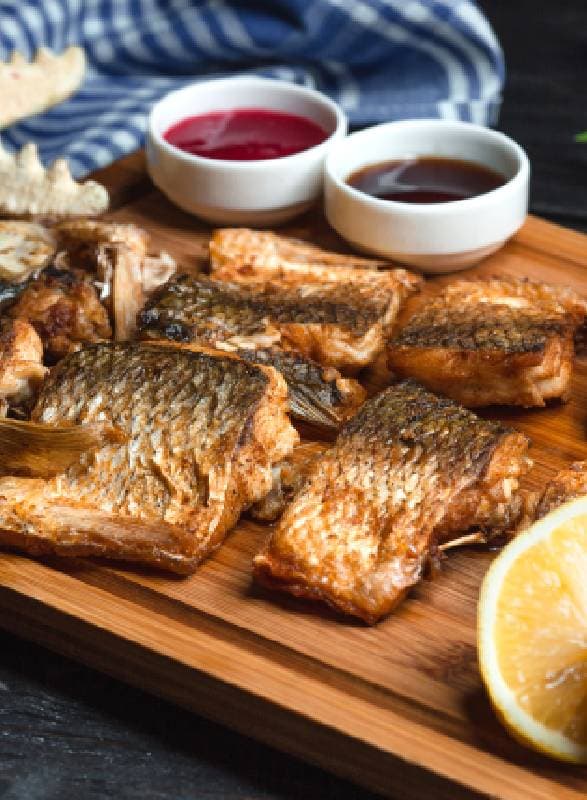In the culinary world, few delights match the buttery, velvety texture and rich flavor of sablefish, also known as black cod. This deepwater treasure, hailed for its nutritional value and versatility in the kitchen, has captured the hearts of food enthusiasts and chefs alike.

Our journey through this article will unveil the secrets of sablefish, from its unique characteristics to a plethora of ways to prepare it, ensuring every bite is an experience to remember. We’ll dive into sustainable practices that make enjoying sablefish even more satisfying, and answer some burning questions you might have about this exquisite fish. So, let’s embark on this culinary adventure, exploring the depths of flavor and nutrition that sablefish has to offer.
Introduction to Sablefish
Understanding Sablefish: A Culinary Delight
Sablefish, a name that evokes images of deep, cold waters and a fish that’s as intriguing as its habitat. But what exactly is this creature that has foodies and chefs raving? Often mistaken for its distant cousin, the cod, sablefish belongs to a unique family. Thriving in the Pacific Northwest and Alaska, this deepwater species is not just another fish in the sea. It’s a nutritional powerhouse, packed with omega-3 fatty acids, Vitamin B12, B6, Magnesium, Iron, and Calcium. The allure of sablefish lies not just in its health benefits but in its extraordinary taste and texture.
The Unique Taste and Texture of Sablefish
Imagine biting into a piece of fish so buttery and flaky, it almost melts in your mouth. That’s sablefish for you. Its high fat content, a result of living in the chilly depths of the ocean, gives it a luxurious texture that’s hard to find in other seafood. It’s no wonder one of our customers dubbed it the “chocolate of fish.” But don’t let the term ‘fat’ deter you. This is the good kind, the kind that forgives cooking mishaps and turns every dish into a masterpiece.
Moreover, sablefish’s versatility is a chef’s dream. Whether you’re broiling, searing, baking, or grilling, this fish adapts, making it perfect for a wide array of culinary experiments. And for those wary of the “fishy” taste common in seafood, sablefish offers a mild, almost sweet flavor that even the most hesitant fish eaters can appreciate.
So, as we delve deeper into the world of sablefish, remember, this isn’t just about cooking; it’s about exploring the rich tapestry of flavors and textures that the ocean has bestowed upon us. Stay tuned as we uncover the secrets to preparing sablefish, ensuring that every dish is not just food, but a celebration of the sea’s bounty.
Preparing Sablefish for Culinary Excellence
Quick Tips for Cooking Black Cod
Before we dive into the ocean of recipes that highlight the buttery goodness of sablefish, let’s anchor ourselves with some essential tips to ensure your culinary voyage is smooth sailing. First off, remember, this fish is forgiving, but a little know-how can turn a good dish into a great one.
- Pin Bones: These pesky little bones are easier to remove post-cooking. So, patience, dear chef, is key.
- Versatility is Your Friend: Sablefish’s adaptability to different cooking methods is like a treasure chest waiting to be opened. Broil, sear, bake, steam, or grill – the world is your oyster.
- Brining: A brief swim in a brine can firm up the flesh, making it even more succulent.
- Cooking Temperature: Aim for 145°F or until it flakes with a fork’s twist. This ensures your sablefish is cooked to perfection, retaining its moisture and flavor.
- Basting: Keep that sauce handy. Basting helps incorporate flavors, making each bite a symphony.
The Importance of Sustainable Fishing Practices
Now, let’s take a moment to talk about something close to our hearts – sustainability. In our quest for deliciousness, it’s crucial to remember our responsibility towards the ocean and its inhabitants. Sustainable fishing practices ensure that we can enjoy sablefish without depleting its populations or harming the marine ecosystem.
Choosing sablefish from sources that prioritize quality over quantity not only supports the environment but also guarantees you’re getting the freshest, most flavorful fish. These practices often involve careful handling and quick processing, preserving the fish’s texture and taste. Moreover, sustainable fishing means the fish are caught closer to shore and brought to market swiftly, ensuring peak freshness.
By opting for sablefish from sustainable sources, we’re not just making a choice for our palate but also casting a vote for the health of our planet. It’s a win-win situation where we get to indulge in the luxurious taste of sablefish while supporting fishing practices that ensure future generations can do the same.
As we move forward, keep these tips and considerations in mind. They’re not just guidelines but stepping stones to creating dishes that are not only mouthwateringly delicious but also respectful of the ocean’s bounty. Stay tuned for the next part, where we’ll dive into an array of sablefish recipes that are sure to inspire your next culinary creation.


